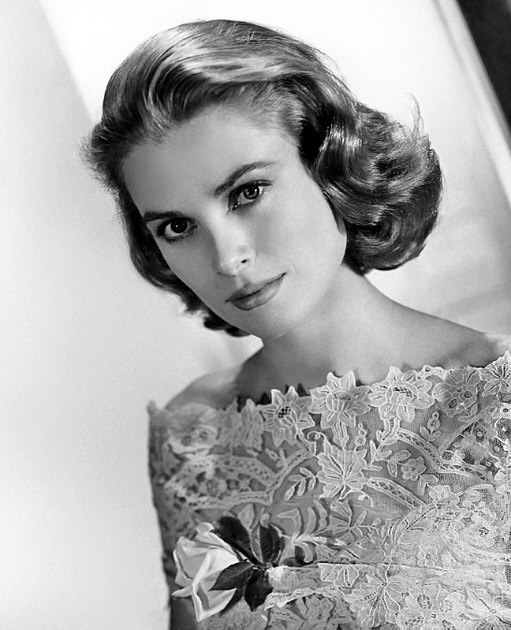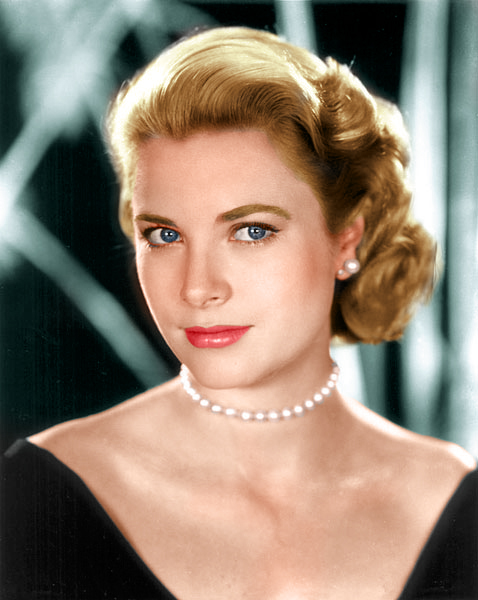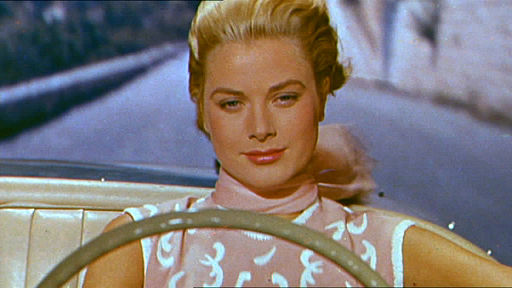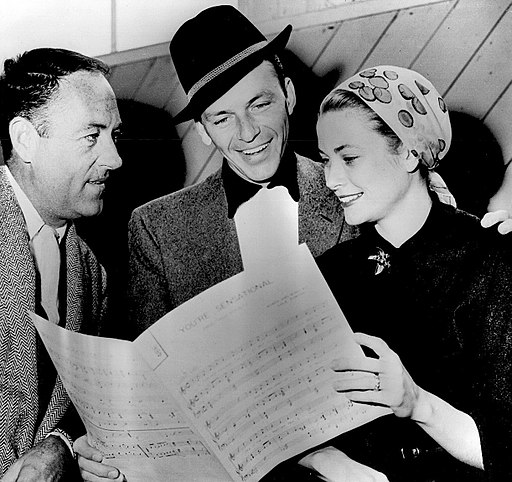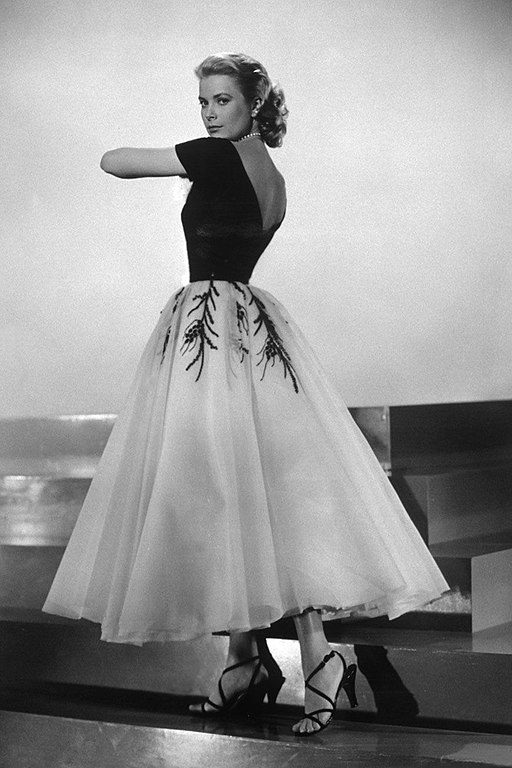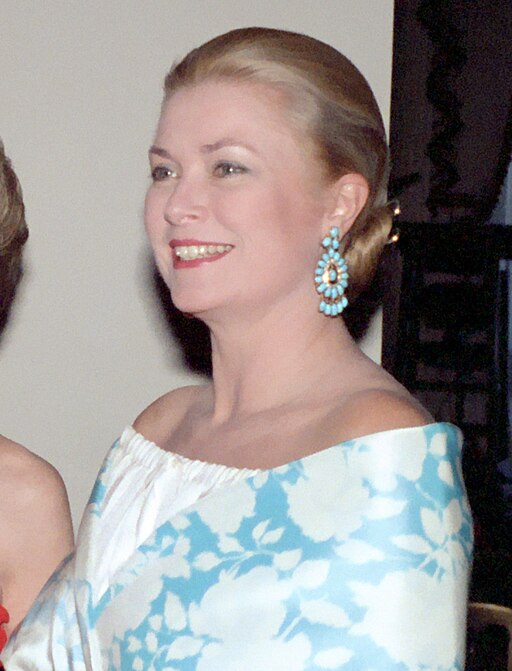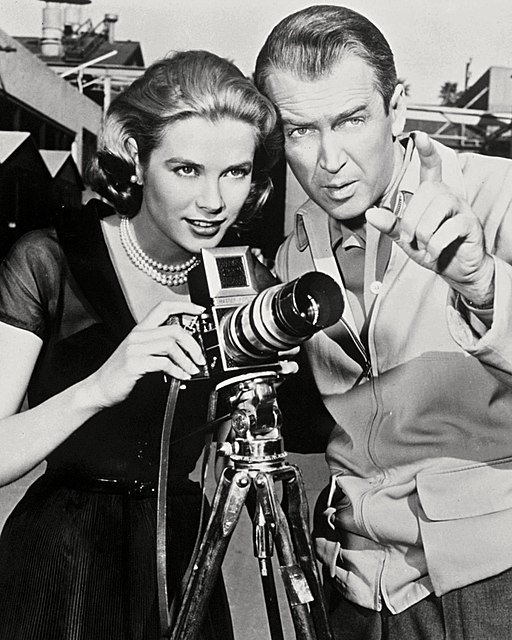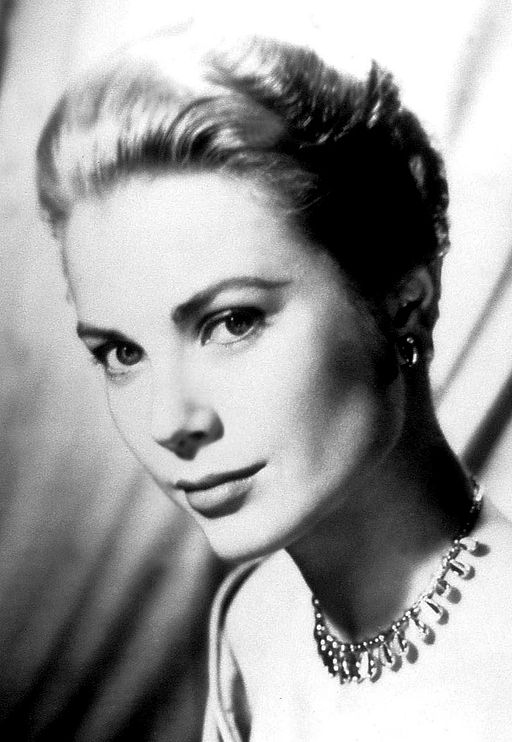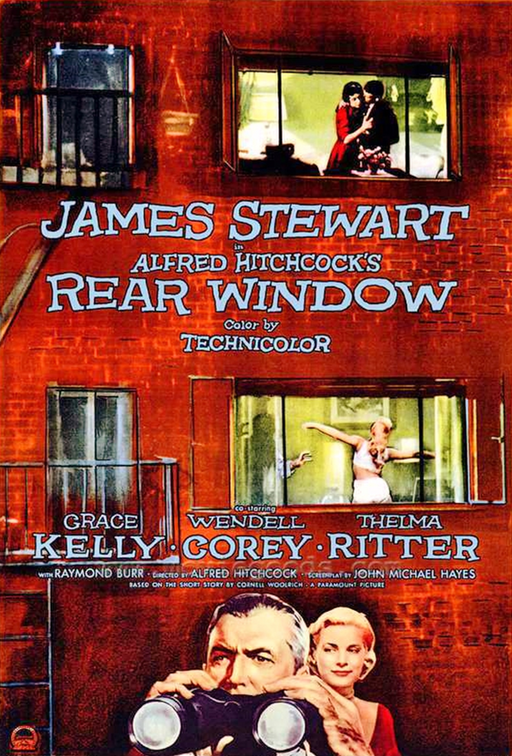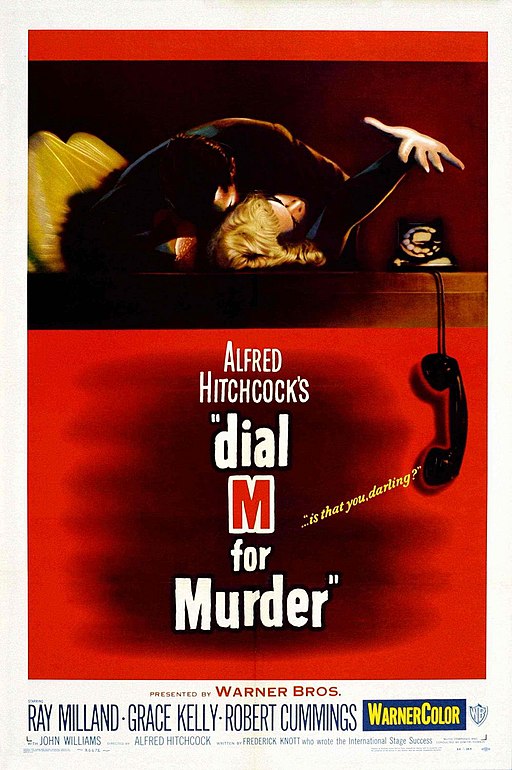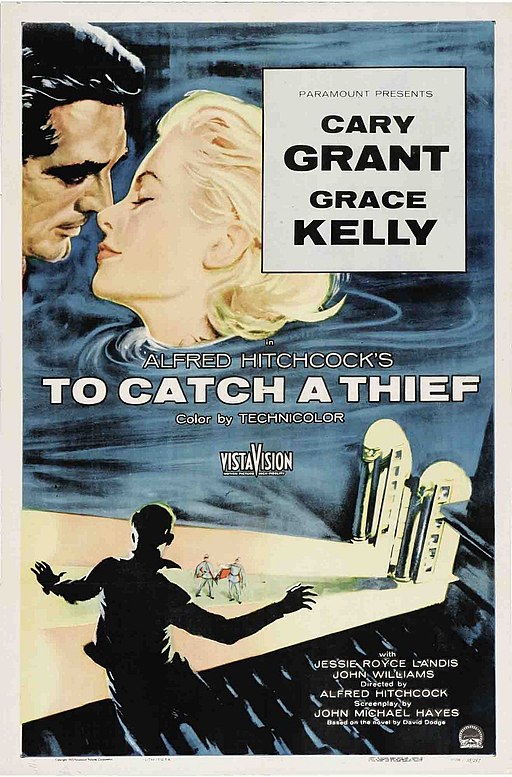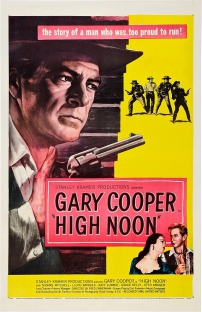Grace Kelly
back| Full Name | Grace Patricia Kelly |
| Stage Name | Grace Kelly |
| Born | November 12, 1929 |
| Birthplace | Philadelphia, Pennsylvania, U.S. |
| Died | September 14, 1982 |
| Buried | Cathedral of Our Lady Immaculate, Monaco |
| Married to | Rainier III, Prince of Monaco |
| Children | Caroline, Princess of Hanover; Albert II, Prince of Monaco; Princess Stéphanie of Monaco |
| Notable films | Rear Window - Dial M for Murder - Country Girl - Mogambo |
Grace Kelly – The “Ice Queen” who became a princess
Grace Kelly, born on November 12, 1929, in Philadelphia, Pennsylvania, was a prominent American actress who became the Princess of Monaco after marrying Prince Rainier III in 1956. She attended the American Academy of Dramatic Arts and made her acting debut on Broadway before moving to Hollywood.
Grace quickly rose to stardom with her stunning looks, poised demeanor, and remarkable acting skills. In her five-year acting career, she appeared in 11 films, working with acclaimed directors like Alfred Hitchcock and John Ford. Her performances in “The Country Girl” and “Rear Window” are particularly celebrated, with the former earning her an Academy Award for Best Actress.
Grace was often referred to as the "Ice Queen" due to her cool, elegant, and sophisticated demeanor, embodying the "Hitchcock blonde" persona in three of his films. In 1955, while attending the Cannes Film Festival, she met Prince Rainier III of Monaco, and the two wed the following year, marking the end of her acting career.
Related
Grace Kelly (1929 - 1989)
Biography and Movie Career
Grace Patricia Kelly, born on November 12, 1929, in Philadelphia, Pennsylvania, was an American actress who became Princess of Monaco after marrying Prince Rainier III in April 1956. She was born into a wealthy and prominent family; her father was a three-time Olympic gold medalist in rowing, and her uncle was a Pulitzer Prize-winning playwright.
Grace Kelly's acting career began in 1950 when she made her Broadway debut. She appeared in live television broadcasts during the early 1950s and made her big-screen debut in "Fourteen Hours" (1951). Her striking beauty and poised demeanor quickly caught the attention of Hollywood, and she went on to star in a series of successful films.
Her most notable works include "High Noon" (1952), where she played the role of Amy Fowler Kane, "Rear Window" (1954) directed by Alfred Hitchcock, where her portrayal of Lisa Carol Fremont became iconic, and "The Country Girl" (1954) where she delivered an Oscar-winning performance as Georgie Elgin. Hitchcock was particularly instrumental in shaping Kelly’s career, casting her in "Dial M for Murder" (1954) and "To Catch a Thief" (1955).
Despite her success in Hollywood, Grace Kelly left her acting career at the age of 26 after becoming engaged to Prince Rainier III of Monaco. Their wedding was widely covered by the media and dubbed the "wedding of the century."
As Princess of Monaco, she focused on philanthropy and cultural development. She founded the Princess Grace Foundation in 1964 to support local artisans. She was also active in improving the arts scene in Monaco, helping to establish the Princess Grace Academy of Classical Dance.
Grace Kelly's life was tragically cut short on September 14, 1982, when she suffered a stroke while driving and subsequently died in a car accident at the age of 52. She was buried in the Cathedral of Our Lady Immaculate in Monaco, and her legacy endures as a symbol of elegance, grace, and philanthropy.
Grace Kelly and Prince Rainier III had three children: Caroline, Princess of Hanover; Albert II, Prince of Monaco; and Princess Stéphanie of Monaco. Her legacy also lives on through her children and grandchildren, ensuring that the grace and elegance she epitomized remain a significant part of her enduring appeal.
Grace Kelly winning the Oscar in 1955:
Grace Kelly’s death:
Grace Kelly's untimely death on September 14, 1982, was a tragic event that left the world in mourning. At the age of 52, the former actress and Princess of Monaco suffered a stroke while driving her car, which led to a crash and her eventual death. Here’s an overview of the circumstances and the impact of her death:
Circumstances of the Accident:
- Date and Place: On September 13, 1982, Grace Kelly was driving along a winding road in the Côte d'Azur region of France, near her home in Monaco.
- Medical Emergency: She suffered a stroke while driving, which caused her to lose control of her vehicle.
- Car Crash: The car went off the steep road and plunged down a mountainside. Grace Kelly’s daughter, Stéphanie, who was in the passenger seat, survived the crash but was injured.
- Hospitalization and Death: Grace Kelly was rushed to the hospital, but her injuries were too severe, and she passed away the next day.
Impact and Legacy:
- Global Mourning: News of Grace Kelly’s death sent shockwaves around the world. She was beloved not only for her work in Hollywood but also for her role as the Princess of Monaco, and her philanthropic efforts.
- State Funeral: A state funeral was held in Monaco, attended by numerous heads of state, Hollywood celebrities, and other dignitaries.
- Memorial and Tributes: Grace Kelly was memorialized in various ways, with tributes pouring in from all corners of the globe. Films were re-aired, memorial services held, and her life and work celebrated.
- Legacy of Philanthropy: Her untimely death brought attention to her extensive philanthropic work. The Princess Grace Foundation-USA was established in her memory to support emerging artists in theater, dance, and film.
Personal and Public Loss:
Grace Kelly’s death was a personal loss to her family, especially her husband Prince Rainier III, and their three children. Publicly, it was the end of an era – the world had lost an icon who had seamlessly transitioned from Hollywood royalty to actual royalty. Her elegance, grace, and genuine warmth had made her a beloved figure, and her untimely death left a void that was felt by many.
Analysis of Grace Kelly’s acting style:
Grace Kelly was renowned for her elegant and poised on-screen presence, marked by a refined and understated acting style. Her performances were characterized by a subtle intensity and an ability to convey deep emotions without over-exaggeration.
Elegance and Poise
Grace Kelly was the epitome of elegance and poise, both in her personal life and on screen. Her regal bearing and graceful movements lent a distinctive charm to her characters, making her performances memorable.
Subtle Intensity
Kelly’s acting was marked by a subtle intensity. She could portray complex emotions with minimalistic expressions, relying on slight changes in her facial expressions and tone of voice to convey her character’s inner turmoil or joy.
Naturalism
She was noted for her naturalistic approach to acting. Her performances were grounded and realistic, avoiding melodramatic or theatrical expressions. This made her characters relatable and authentic, endearing her to audiences.
Emotional Range
Despite her often reserved on-screen persona, Kelly displayed a remarkable emotional range. From the vulnerable and troubled wife in “The Country Girl” to the sophisticated and assertive socialite in “Rear Window,” she proved her versatility across a spectrum of roles.
Chemistry with Co-Stars
Kelly had a remarkable ability to establish strong chemistry with her co-stars, enhancing the believability of her performances. Her on-screen relationships, whether romantic or platonic, were convincing and engaging.
Command of Voice
Her command of voice was another notable aspect of her acting style. She could convey a wealth of emotions through her voice alone, adding depth to her performances.
Attention to Detail
Kelly was known for her meticulous preparation for roles and her attention to detail. She worked diligently to understand her characters’ backstories, motivations, and relationships, which translated into nuanced and well-informed performances.
Grace Under Pressure
Even in moments of high tension or emotional turmoil, Kelly’s characters maintained a sense of grace and composure. This was a defining characteristic of her acting style, making her performances captivating and memorable.
Timeless Appeal
Grace Kelly’s acting style has a timeless quality, remaining appealing and relevant to modern audiences. Her elegance, subtlety, and naturalism set a standard for on-screen performances that continues to be admired.
Complete overview of movies starring Grace Kelly:
1951
- Fourteen Hours: A minor role in this film about a police officer trying to prevent a young man from jumping off a New York hotel's ledge.
1952
- High Noon: Kelly plays Amy Fowler Kane, the Quaker wife of Marshal Will Kane (played by Gary Cooper), in this iconic Western.
1953
- Mogambo: In this adventure-romance film, Kelly plays Linda Nordley, a wife caught in a love triangle with her husband and a big-game hunter in Africa.
- The Stars are Singing: She has a cameo role in this musical comedy.
1954
- Dial M for Murder: Directed by Alfred Hitchcock, Kelly plays Margot Wendice, a woman whose husband plots her murder.
- Rear Window: Another Hitchcock classic, Kelly stars as Lisa Carol Fremont, a fashion consultant who helps her boyfriend solve a neighbor’s murder.
- The Country Girl: Kelly plays Georgie Elgin, the wife of an alcoholic actor, a role that earned her an Academy Award for Best Actress.
- Green Fire: A drama-adventure film where Kelly portrays Catherine Knowland, a woman involved in a romantic triangle in the emerald mining business of South America.
1955
- To Catch a Thief: Her third collaboration with Hitchcock, Kelly plays Frances Stevens, a wealthy heiress who gets involved with a former cat burglar.
- The Bridges at Toko-Ri: Kelly stars as Nancy Brubaker, the wife of a Naval fighter pilot during the Korean War.
1956
- High Society: A musical comedy featuring Kelly as Tracy Samantha Lord, a socialite caught in a love triangle, which was her final film before becoming Princess of Monaco.
This list encapsulates Grace Kelly's brief yet impactful career in Hollywood before her marriage to Prince Rainier III of Monaco, which led her to retire from acting at the age of 26.
Notable quotes from Grace Kelly:
On Acting and Career:
- "I would like to be remembered as someone who accomplished useful deeds, and who was a kind and loving person. I would like to leave the memory of a human being with a correct attitude and who did her best to help others."
- "I'm basically a feminist. I think that women can do anything they decide to do."
On Life and Personal Growth:
- "Getting angry doesn’t solve anything."
- "I’ve always treated my children as beings in their own right. I respect their feelings and aspirations entirely."
On Love and Relationships:
- "Love is more important than what we can take... You've got to keep watering it. You've got to really look after it and nurture it."
On Style and Elegance:
- "Elegance is innate. It has nothing to do with being well dressed. Elegance is refusal."
- "I never liked one of my performances. Never."
Reflecting on Her Royal Life:
- "I would like to be remembered as a decent human being and a caring one."
Analysis of Grace Kelly’s role as Georgie Elgin in the movie “Country Girl”:
"Country Girl" (1954) is a remarkable film in Grace Kelly's career, showcasing her exceptional acting skills and earning her an Academy Award for Best Actress. In this film, directed by George Seaton, Kelly played the role of Georgie Elgin, the wife of a washed-up alcoholic singer, portrayed by Bing Crosby.
Character Overview:
Georgie Elgin is a strong, devoted, yet emotionally strained woman who has been supporting her husband, Frank Elgin, through his battle with alcoholism and career decline. She is a complex character, torn between her love for her husband and the harsh realities of their life.
Performance and Impact:
- Transformation: Grace Kelly’s portrayal of Georgie marked a significant departure from her previous glamorous roles. She embraced the character's raw and vulnerable nature, displaying a range of emotions from despair and frustration to strength and determination.
- Emotional Depth: Kelly brought an intense emotional depth to the role, making Georgie’s pain and struggles palpable. Her performance was heartfelt and genuine, resonating with both audiences and critics.
- Critical Acclaim: Her role in "Country Girl" challenged public perceptions of her as just a beautiful face, solidifying her status as a serious and talented actress. The film provided her with an opportunity to showcase her versatility and acting range.
- Award Recognition: Her performance was critically acclaimed, earning her an Academy Award for Best Actress. The win was somewhat of a surprise to many, as she was up against strong competition, including Judy Garland in “A Star is Born.”
- Legacy: Grace Kelly's role in "Country Girl" remains one of her most important and memorable performances, highlighting her capability to take on complex, dramatic roles and deliver powerful performances.
Analysis of her role as Lisa Carol Fremont in “Rear Window”:
"Rear Window" (1954), directed by Alfred Hitchcock, is one of the most iconic films in the thriller genre, and Grace Kelly's role as Lisa Carol Fremont is central to its enduring appeal. Her character is a sophisticated and fashionable society woman, deeply in love with L.B. "Jeff" Jefferies, a photographer played by James Stewart.
Character Overview:
Lisa Carol Fremont is an elegant, high-society fashion consultant, characterized by her grace, intelligence, and tenacity. She is deeply in love with Jeff, despite his initial doubts about their compatibility due to their different lifestyles.
Performance and Impact:
- Glamour and Sophistication: Grace Kelly’s portrayal of Lisa epitomizes elegance and charm, setting a standard for high-society characters in cinema. Her glamorous wardrobe and poised demeanor made her character unforgettable and significantly contributed to the film’s visual appeal.
- Depth and Complexity: Despite her glamorous exterior, Lisa is a strong, determined character. Kelly brought depth to the role, showcasing Lisa's willingness to step out of her comfort zone and put herself in danger to help solve the mystery of the suspected murder in the adjacent apartment.
- Chemistry with Co-Star: Kelly's on-screen chemistry with James Stewart is palpable, adding a layer of authenticity to their relationship. Their interactions range from playful banter to serious conversations, reflecting the complexities of their relationship.
- Critical Acclaim: Kelly’s performance in "Rear Window" received widespread critical acclaim. Her ability to balance the character’s elegance with a strong sense of agency and determination was particularly praised.
- Iconic Fashion: Lisa’s wardrobe, designed by Edith Head, became iconic, influencing fashion trends and highlighting the importance of costume design in character development.
- Legacy: Grace Kelly’s role in "Rear Window" solidified her status as one of Alfred Hitchcock’s quintessential leading ladies, and the film remains one of her most celebrated performances.
Grace Kelly in Alfred Hitchcock’s “To Catch a Thief”:
"To Catch a Thief" (1955) remains one of Grace Kelly's most iconic roles, and its significance in her career cannot be understated.
Grace Kelly in "To Catch a Thief":
Role: Grace Kelly played the role of Frances Stevens, a wealthy American heiress vacationing on the French Riviera. Frances becomes involved with John Robie, a retired cat burglar played by Cary Grant, who's suspected of returning to his criminal ways.
Performance: Kelly's portrayal of Frances is a blend of sophistication, wit, allure, and intelligence. She's an equal match to Grant's Robie in their playful banter, and their chemistry is undeniable. The character exhibits both vulnerability and strength, a balance that Kelly achieved masterfully.
Significance of the Role:
- Collaboration with Hitchcock: This was the third and final collaboration between Grace Kelly and director Alfred Hitchcock, following "Dial M for Murder" and "Rear Window." Hitchcock's appreciation for Kelly's talent was evident, and their collaborations always resulted in cinematic gems.
- Transition to Princess: The movie was set and filmed on the French Riviera, the region close to Monaco, where Grace Kelly would soon become the princess. The setting of "To Catch a Thief" is often romantically linked to her real-life fairy tale transformation into royalty.
- Fashion and Style: The film is renowned for its fashion, especially the outfits worn by Kelly, designed by Edith Head. These outfits added to Kelly's growing reputation as a style icon of her era. Her ice-blue gown in the film, in particular, is legendary.
- Romantic Significance: It's during the Cannes Film Festival for this movie that Grace Kelly met Prince Rainier III of Monaco. This chance meeting would eventually lead to their marriage.
- Acting Range: "To Catch a Thief" showcased a lighter, more playful side of Kelly's acting, contrasting with her deeper, more dramatic roles in films like "The Country Girl." The film demonstrated her versatility as an actress.
Analysis of Grace Kelly’s role as Linda Nordley in “Mogambo”:
Grace Kelly’s role in "Mogambo" (1953) is one of the notable performances of her acting career. Below is an analysis of her role in the film:
Grace Kelly in "Mogambo":
Role: Grace Kelly played the character Linda Nordley, a sophisticated, reserved, and elegant woman, who is on an African safari with her husband, Donald Nordley. The couple's journey takes a turn when they meet Victor Marswell, a big game hunter played by Clark Gable.
Performance: Kelly’s performance in "Mogambo" is multi-layered. On the surface, Linda is composed and in control, but as the film progresses, her vulnerability and desire for love and affection become evident. Kelly portrays Linda's emotional turmoil and internal conflict with great subtlety and depth, capturing the audience's empathy.
Significance of the Role:
- Oscar Nomination: Grace Kelly’s role in "Mogambo" earned her an Academy Award nomination for Best Supporting Actress. This nomination helped in solidifying her position in Hollywood as a talented and serious actress.
- Transition from Supporting Roles: "Mogambo" was one of the significant films that helped in transitioning Grace Kelly from supporting roles to leading lady status. Her performance alongside established stars like Clark Gable and Ava Gardner showcased her ability to hold her own and shine in a stellar cast.
- Building Professional Relationships: The film also helped in building her relationship with MGM, the studio that would later play a crucial role in her career, especially in her collaborations with director Alfred Hitchcock.
- Showcasing Versatility: In "Mogambo," Kelly was able to showcase her versatility as an actress. She navigated through the complexities of her character with grace and finesse, demonstrating her range and acting prowess.
- Exotic Location and Adventure: The movie’s setting in Africa and its adventurous storyline gave Kelly a chance to be seen in a different light, adding an exotic and adventurous layer to her on-screen persona.
Awards and Nominations:
Awards:
Academy Award (Oscar):
- Won: Best Actress for “The Country Girl” (1955)
Golden Globe Awards:
- Won: Best Actress in a Motion Picture – Drama for “The Country Girl” (1955)
- Won: World Film Favorite – Female (1956)
National Board of Review:
- Won: Best Actress for “The Country Girl” (1954)
New York Film Critics Circle Awards:
- Won: Best Actress for “The Country Girl” (1954)
Nominations:
Academy Award (Oscar):
- Nominated: Best Actress in a Leading Role for “Mogambo” (1954)
BAFTA Awards:
- Nominated: Best Foreign Actress for “The Country Girl” (1956)
- Nominated: Best Foreign Actress for “Rear Window” (1956)
Emmy Awards:
- Nominated: Outstanding Single Performance by an Actress (Lead) for "The Turn of the Screw" (1959)
Golden Globe Awards:
- Nominated: Best Actress in a Motion Picture – Drama for “Mogambo” (1954)

